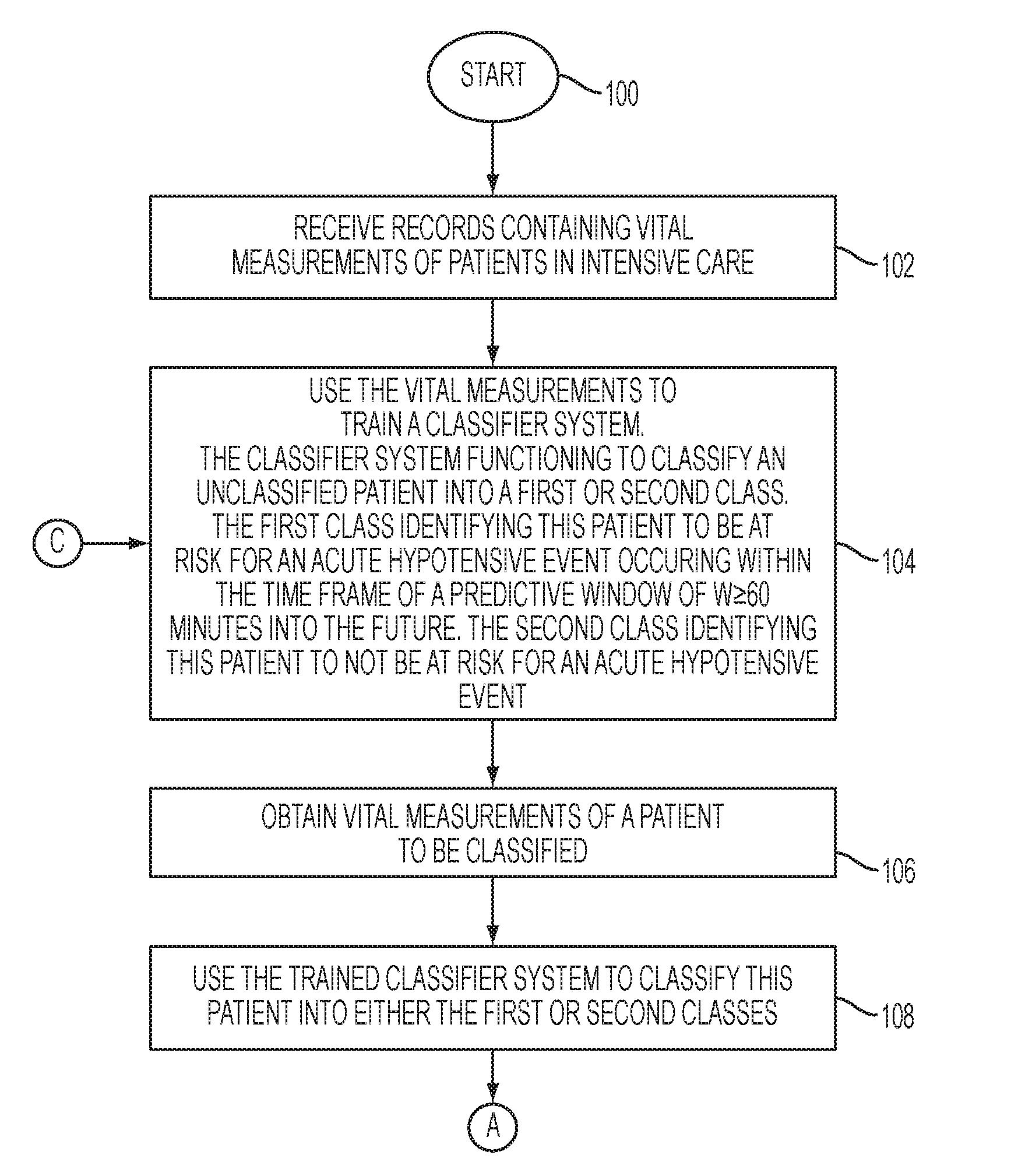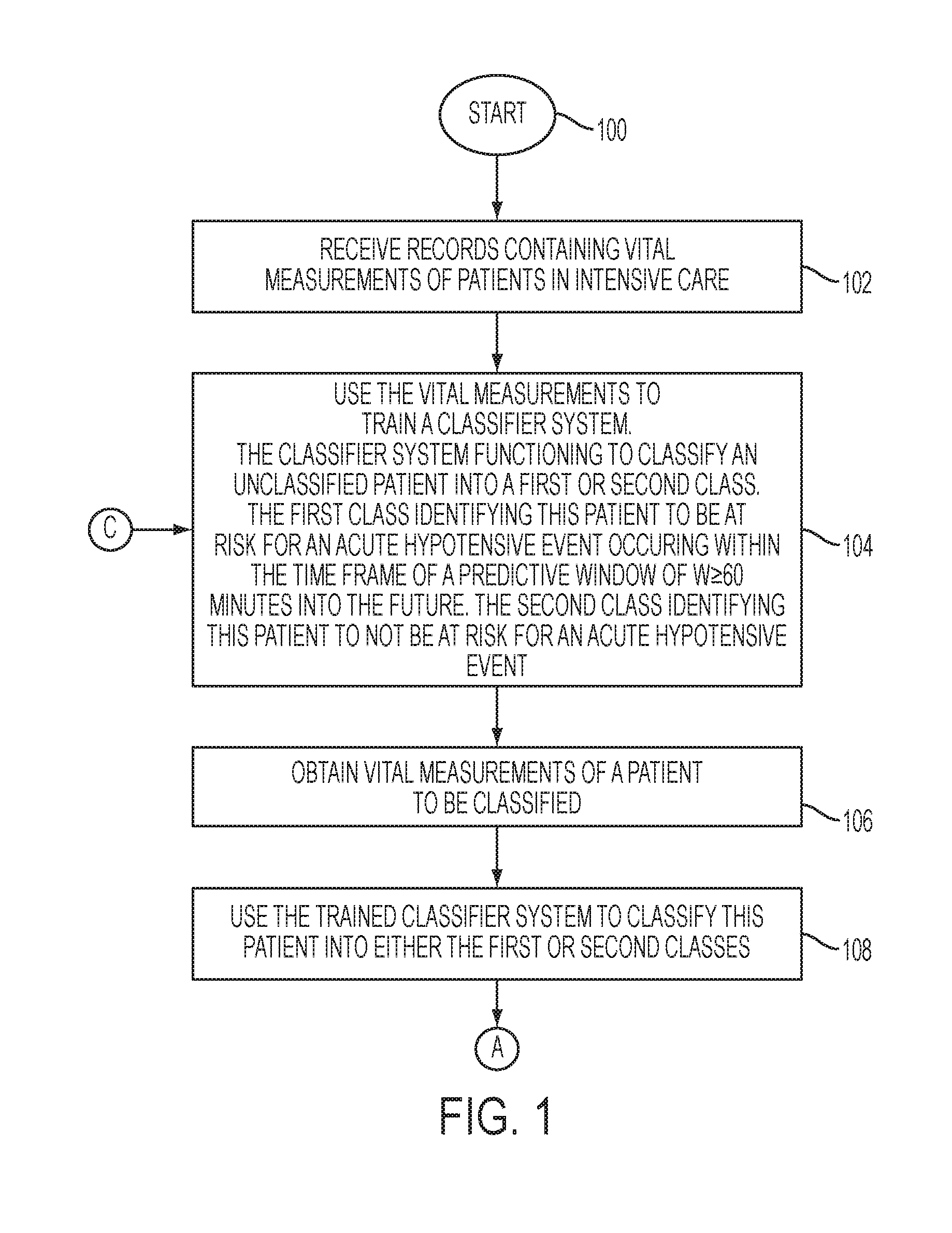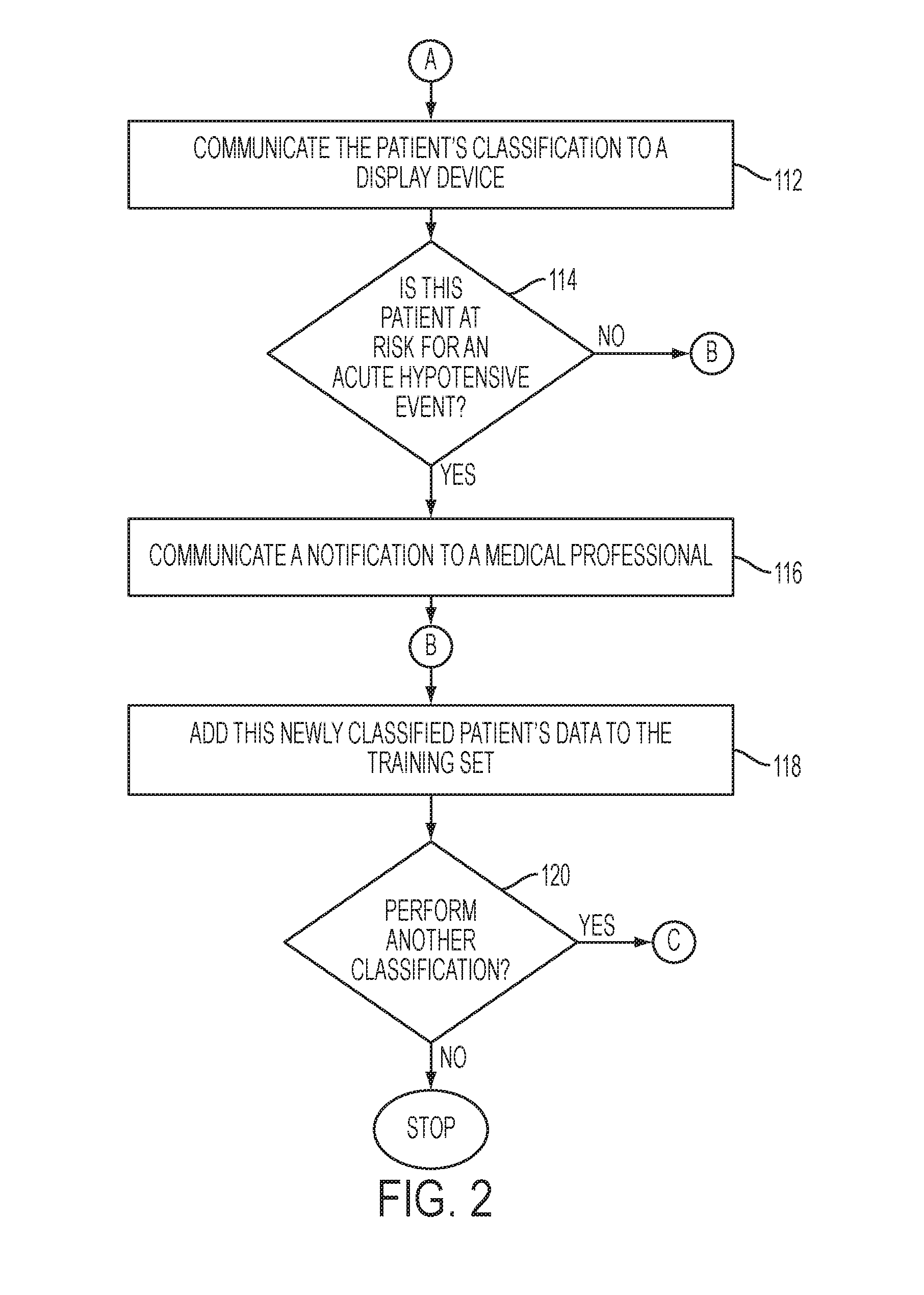Assessing patient risk of an acute hypotensive episode with vital measurements
a patient risk and vital measurement technology, applied in the field of assessing patient risk of acute hypotensive episodes with vital measurements, can solve problems such as organ damage, and achieve the effect of improving predictive accuracy
- Summary
- Abstract
- Description
- Claims
- Application Information
AI Technical Summary
Benefits of technology
Problems solved by technology
Method used
Image
Examples
Embodiment Construction
[0011]What is disclosed is a system and method for assessing patient risk for an occurrence of an acute hypotensive episode within the timeframe of a prospective prediction window using multiple vitals to improve predictive accuracy.
[0012]A “subject” refers to refers to a person being monitored for an acute hypotensive episode. The terms “subject” and “patient” are used interchangeably. The subject is typically a patient in an intensive care unit (ICU).
[0013]An “unclassified patient” is a person who is being classified by the present classifier system.
[0014]“Arterial blood pressure” or simply “blood pressure”, is a vital sign that is routinely monitored. Blood pressure is written as a ratio in mmHg (e.g. 120 / 80). The top number (systolic), which is also the higher of the two numbers, is a measure of the pressure in the arteries when the heart beats (i.e., when the heart muscle contracts). The bottom number (diastolic), which is also the lower of the two numbers, is a measure of the ...
PUM
 Login to View More
Login to View More Abstract
Description
Claims
Application Information
 Login to View More
Login to View More - R&D
- Intellectual Property
- Life Sciences
- Materials
- Tech Scout
- Unparalleled Data Quality
- Higher Quality Content
- 60% Fewer Hallucinations
Browse by: Latest US Patents, China's latest patents, Technical Efficacy Thesaurus, Application Domain, Technology Topic, Popular Technical Reports.
© 2025 PatSnap. All rights reserved.Legal|Privacy policy|Modern Slavery Act Transparency Statement|Sitemap|About US| Contact US: help@patsnap.com



